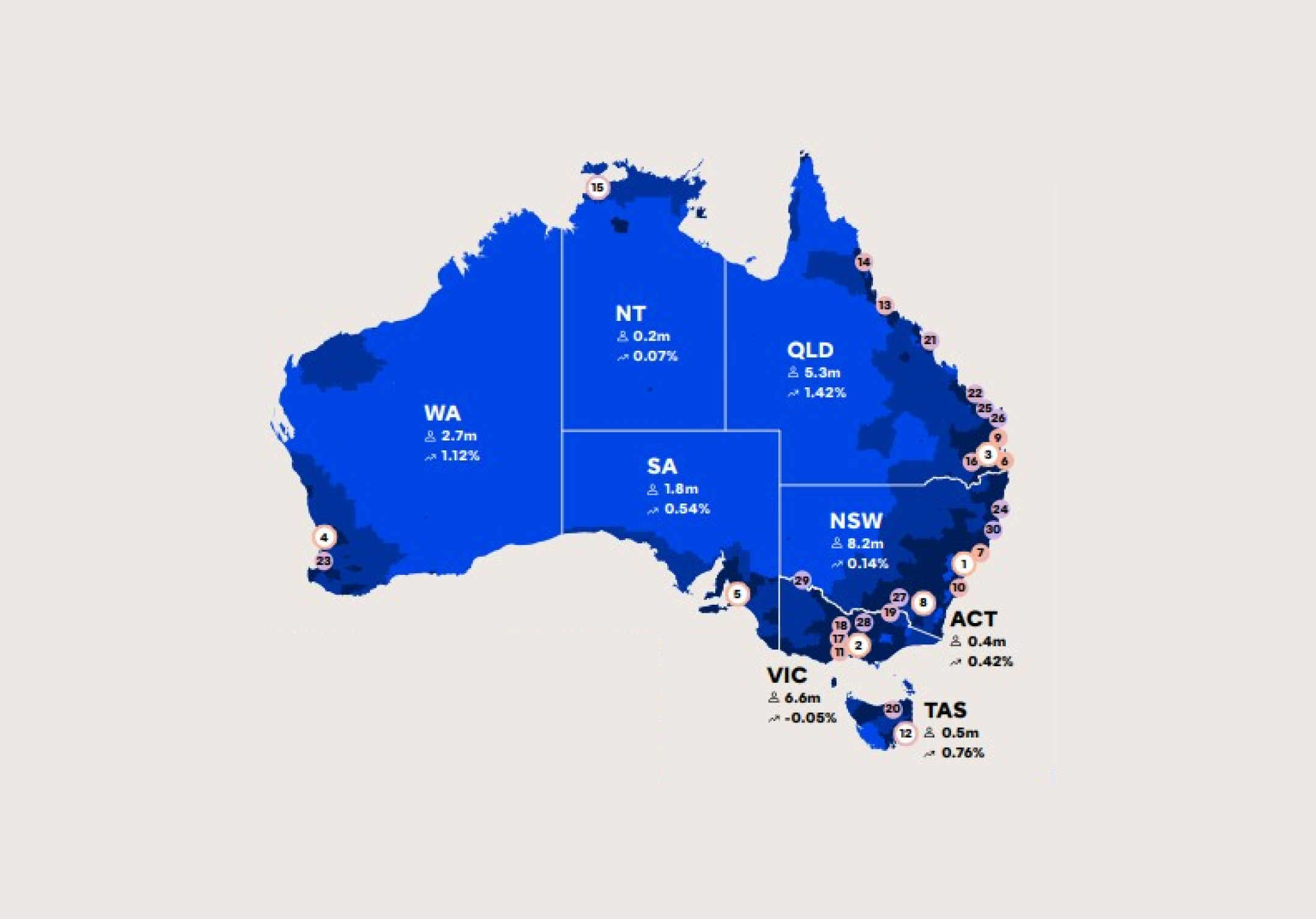Demographics
25 facts about Australia at 25 million

Australia’s population has hit 25 million, doubling in the lifetime of most adult Australians
It was 1970 when the population was 12.5 million, exactly half the current milestone.
The most recent million people have been added in record time – just 31 months, compared with the previous million (from 23 to 24 million) which took 35 months.
Almost two-thirds of Australia’s population growth comes from immigration, while one-third comes from natural increase, or births minus deaths.
Based on the current trajectory, we are on track to reach 30 million people by 2030 and 40 million by 2048.
We take a look at 25 things that have changed, and why
- Melbourne is currently Australia’s fastest growing city. In the past year it has grown by more than 125,000 people — that’s the equivalent of adding a new Darwin to Melbourne annually. Based on the current growth trends, Melbourne will overtake Sydney to be Australia’s largest city in seven years’ time.
- While Australia’s largest capital cities are currently seeing record growth, some regional cities like Mackay, Gladstone and Geraldton experienced population declines over the last year.
- Of Australians born overseas, the most common country of birth after England is now China (including Hong Kong).
- More people live in Sydney and Melbourne today than lived in the whole nation in 1959.
- Today 26 percent of Australians are born overseas, compared to 1966 when only 18 percent of the population had been born overseas.
- A new baby is born every 1 minute and 42 seconds — that’s more than 308,000 per year.
- More than 90 percent of Australia’s population lives within 100km of the coast.
- The whole state of Tasmania currently comprises 200,000 households. Australia is adding more than 200,000 households every 16 months.
- Australia is ranked as the 53rd largest population in the world (just behind North Korea and just ahead of the Ivory Coast).
- There are more than 9.6 million households in Australia with an average size of 2.6 people per household.
- Australia’s population comprises just 0.33 percent of the global population of 7.6 billion.
- The median age of first marriage for females is 28.7 and males is 30.3.
- The median age of parents (new births) is 31.2 for females and 33.3 for males.
- The average Australian family has 1.9 children.
- Australia’s total fertility rate is 1.7, the same as the OECD average.
- While NSW experiences the highest net loss through interstate migration (NSW loses 15,200 people), VIC experiences the largest gain in population from interstate migration (gaining 18,200 people) of any state or territory.
- Most of the new dwellings approved in NSW are apartments or townhouses (58 percent) compared to just 39 percent in Victoria.
- 73 percent of Aussies live in standalone homes while 26 percent live in apartments or other semi-detached homes.
- Australia is the most culturally diverse nation on earth and collectively we speak more than 300 languages.
- Oliver has been the top baby boy’s name in Australia since 2013. Charlotte has been the top baby girl’s name since 2016.
- In May, the state of Queensland reached a population of five million, a milestone that Melbourne will reach later this month.
- Queensland has more of Australia’s largest 30 cities than any other state, being home to 11 of them.
- Australia currently experiences almost twice as many births as deaths.
- The states of NSW, WA and SA currently have more residents leave these states for other parts of Australia than they gain from the other states.
- Australia’s landmass (7.7million km2) is slightly larger than the contiguous states of the US yet the US is home to 300 million more people than Australia.




